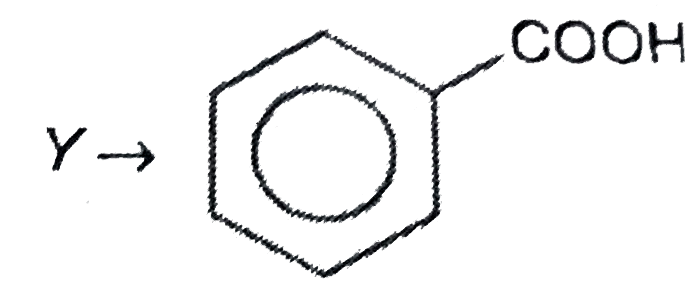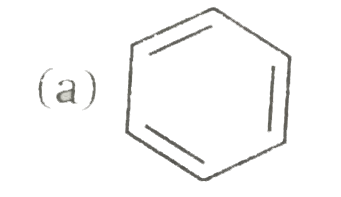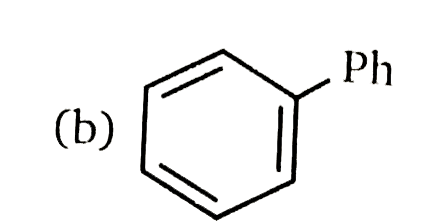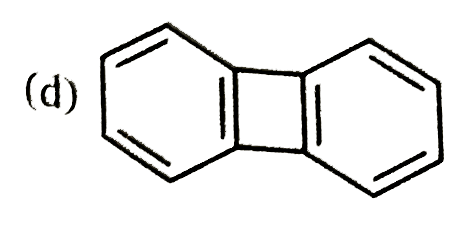An organic compound, A with molecular formula C8H8O forms an orange red precipitate with 2, 4-DNP reagent and gives yellow precipitate on heating with I2 and NaOH. It neither reduces Tollen.s reagent nor Fehling.s reagent, nor does it decolourise bromine water or Baeyer.s reagent. On drastic oxidation with chromic acid, it gives a carboxylic acid B having molecular formula C7H6O2. Identify the compounds A and B and explain the reactions involved.
As the compound A does not reduce Tollen.s reagent or Fehling.s reagent, it is not an aldehyde.
A does not decolourise Br2 water or Baeyer.s reagent, so it is not an unsaturated, aliphatic ketone.

Compound A =Acetophenone
Compound B=Benzoic acid
Similar Questions
An organic compound (A) with molecular formula C8H8O forms an orange red precipitate with 2,4 -DNP reagent and gives yellow precipitate on heating with iodine in the presence of sodium hydroxide . It neither reduces Tollen's reagent or Fehling's solution , nor does it decolourise bromine water or Baeyer's reagent. On drastic oxidation with chromic acid, it gives a carboxylic acid (B) having molecular formulae C7H6O2. Identify the compound (A) and (B) and explain the reactions involved .
View SolutionAn organic compound (A) with molecular formula C8H8O forms an orange red precipitate with 2,4 -DNP reagent and gives yellow precipitate on heating with iodine in the presence of sodium hydroxide . It neither reduces Tollen's reagent or Fehling's solution , nor does it decolourise bromine water or Baeyer's reagent. On drastic oxidation with chromic acid, it gives a carboxylic acid (B) having molecular formulae C7H6O2. Identify the compound (A) and (B) and explain the reactions involved .
View Solution
Knowledge Check
An organic compound (A) with molecular formula C8H8O forms an orange red precipitate with 2,4 -DNP reagent and gives yellow precipitate on heating with iodine in the presence of sodium hydroxide . It neither reduces Tollen's reagent or Fehling's solution , nor does it decolourise bromine water or Baeyer's reagent. On drastic oxidation with chromic acid, it gives a carboxylic acid (B) having molecular formulae C7H6O2. Identify the compound (A) and (B) and explain the reactions involved .
A B
B C
C D
D
An organic compound 'P' with jmolecular formula C8H8O forms an organic red ppt with 2,4−DNP gives yellow ppt. on heating with I2 in presence of NaOH. It neither reduces tollen's or fehling reagent nor does it decolourise Br2 water or baeyer's reagent. On drastic oxidation with chromic acid (H2CrO4) it gives an acid (Q) having molecular formula C7H6O2.
Q. QNaOH/CaO/Δ−−−−−−−−−−→R (Major product).
R will be,A B
B C
C D
D
An organic compound 'P' with jmolecular formula C8H8O forms an organic red ppt with 2,4−DNP gives yellow ppt. on heating with I2 in presence of NaOH. It neither reduces tollen's or fehling reagent nor does it decolourise Br2 water or baeyer's reagent. On drastic oxidation with chromic acid (H2CrO4) it gives an acid (Q) having molecular formula C7H6O2.
Q. Identify compound P:
View SolutionCompound which forms an orange red precipitate with 2, 4 - DNP reagent and gives yellow precipitate on heating with iodine in the presence of sodium hydroxide is
View SolutionAn organic compound 'P' with jmolecular formula C8H8O forms an organic red ppt with 2,4−DNP gives yellow ppt. on heating with I2 in presence of NaOH. It neither reduces tollen's or fehling reagent nor does it decolourise Br2 water or baeyer's reagent. On drastic oxidation with chromic acid (H2CrO4) it gives an acid (Q) having molecular formula C7H6O2.
Q. Punderset(Delta)overset(dil.overset(ө)(O)H)toSunderset(H_(3)O^(o+))overset(CH_(3)MgBr(1" mole"))to
No. of stereoisomer in the final product T:
View SolutionAnorganic compound (A) having molecular formula C9H10O forms an orange red precipitate (B) with 2,4-DNP reagent. Compound (A) gives a yellow precipitate (C) When heated in the presence of iodine and NaOH alongwith a colourless compound (D). (A) does not reduce Tollens' reagent or Fehling solution nor does it decolourise bromine water. On drastic oxidation of (A) with chromic acid, a carboxylic acid (E) of molecular formula C7H6O2 is formed. Deduce the structures of the organic compounds (A) to (E ).
View SolutionAnorganic compound (A) having molecular formula C9H10O forms an orange red precipitate (B) with 2,4-DNP reagent. Compound (A) gives a yellow precipitate (C) When heated in the presence of iodine and NaOH alongwith a colourless compound (D). (A) does not reduce Tollens' reagent or Fehling solution nor does it decolourise bromine water. On drastic oxidation of (A) with chromic acid, a carboxylic acid (E) of molecular formula C7H6O2 is formed. Deduce the structures of the organic compounds (A) to (E ).
View SolutionAnorganic compound (A) having molecular formula C9H10O forms an orange red precipitate (B) with 2,4-DNP reagent. Compound (A) gives a yellow precipitate (C) When heated in the presence of iodine and NaOH alongwith a colourless compound (D). (A) does not reduce Tollens' reagent or Fehling solution nor does it decolourise bromine water. On drastic oxidation of (A) with chromic acid, a carboxylic acid (E) of molecular formula C7H6O2 is formed. Deduce the structures of the organic compounds (A) to (E ).
View Solution
